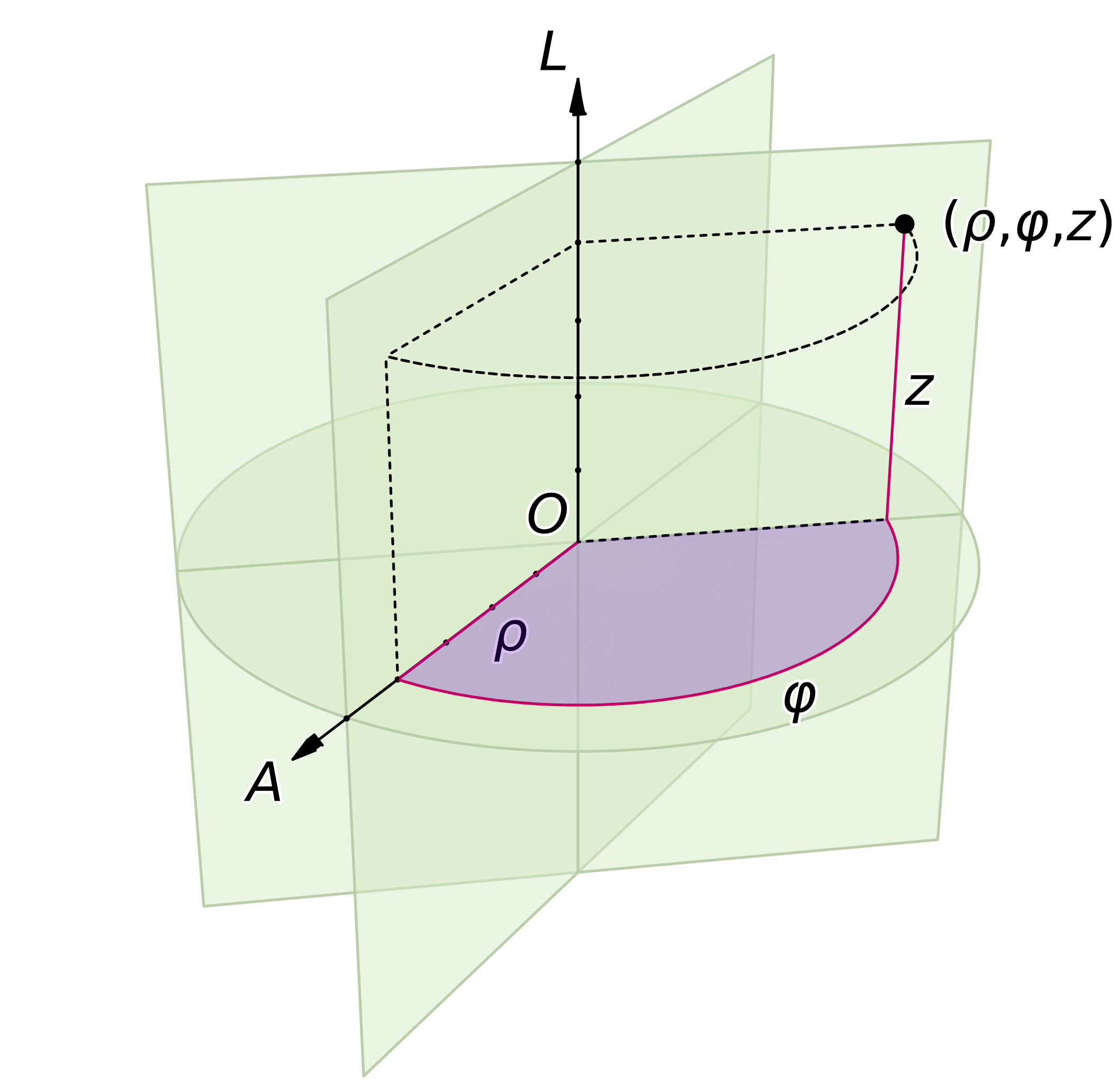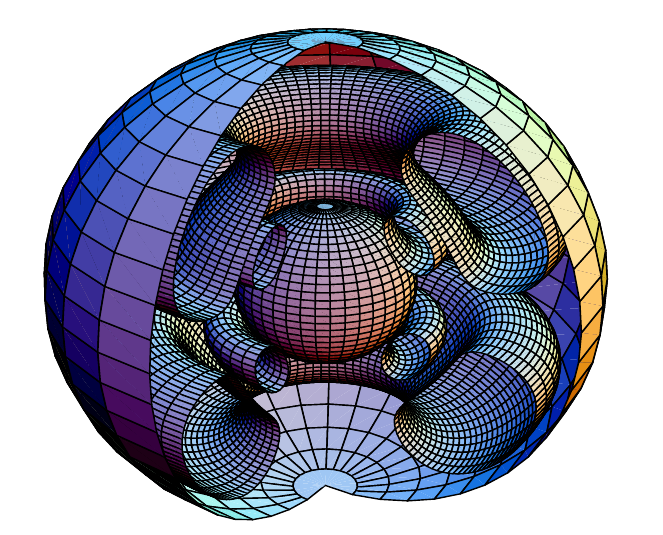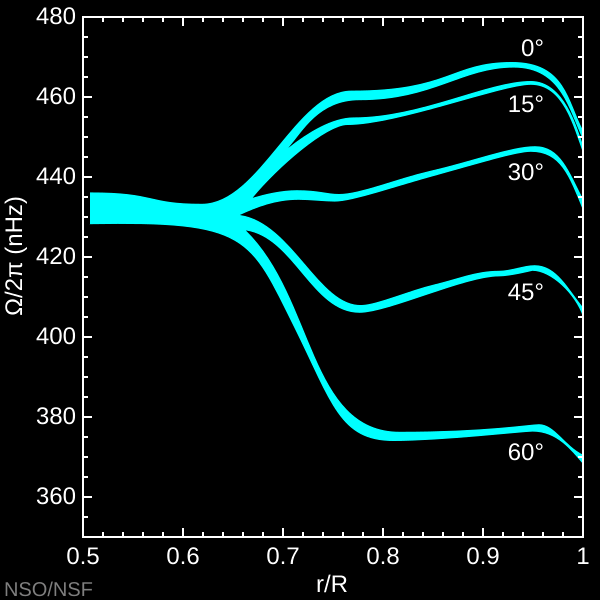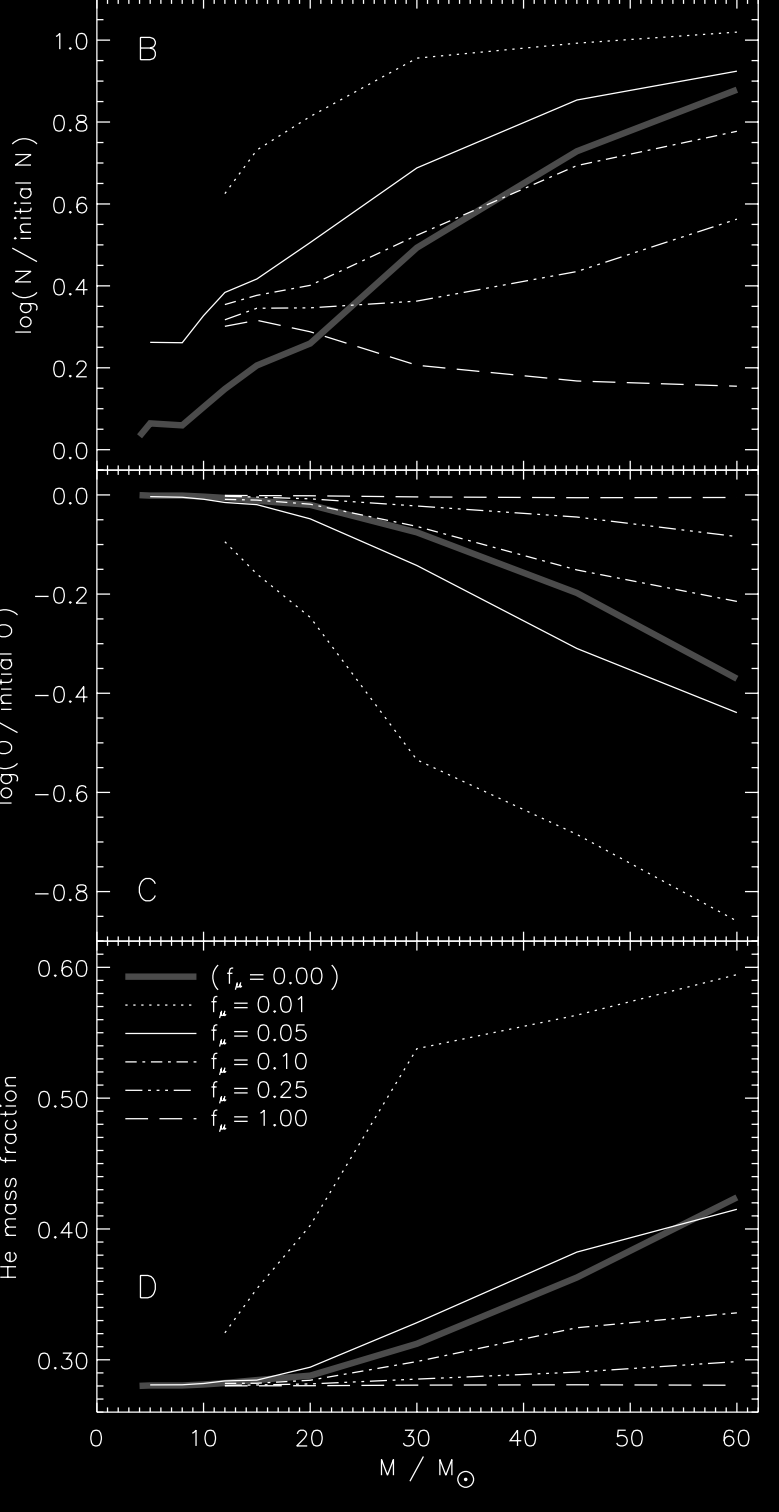Rotation#
Additional Recommended Resource: Physics, Formation and Evolution of Rotating Stars by André Maeder.
Friday, Mar. 21, 2025
astrophysics of stars and planets - spring 2025 - university of arizona, steward observatory
Today’s Agenda#
Announcements - HW3 Corrections due EoD (2m)
Reading Overview/Key Points (5m)
ICA 15 - Gravity Darkening in Low Mass Stars (25m)
Debrief + Share Results (5m)
von Zeipel’s Paradox#
Let’s start to show this by assuming a cylindrical coordinate system: \(\textbf{r}=\textbf{r}(\bar{\omega},\phi,z)\)

\(z\) is aligned with the axis of rotation, “rotation about the Z-axis”
\(\bar{\omega}\) is measured from the z-axis.
We wish to modify the equation of HSE to include the effects of centrifugal force (the apparent outward force on a mass when it is rotated). HSE is our first constraint for such a model.
The first step is to create the total gravitational (or effective potential),
Definition 113
where \(\Phi_{\rm{cent}}=-\Omega^2 \bar{\omega}^2/2\) and \(\Omega\) here corresponds to the angular rotation frequency (rad/s).
This leads to our HSE equation now of the form:
Definition 114
Our second constraint is for the star to be in thermal balance:
leading to
where \(\mathcal{F}\) now depends on \(\Phi_{\rm{eff}}\).
The final result is that for all of these constraints to be true,
Definition 115
Some problems with this:
problem is overconstrained
energy generation rate cannot be directly proportional to rotate rate - unphysical
Solutions to the von Zeipel’s Paradox#
Something must give. We mush relax some constraints:
meridional circulation (Eddington-Sweet Circulation. ) takes part in heat transfer
rotation is more complex, possibly depending on \(\bar{\omega}\) and \(z\).

A schematic illustration of circulation in a 20 solar mass star with an initial rotational velocity of 300 km/s. From Meynet & Maeder 2002. Credit: Astrobites - The consequences of stellar rotation by Nathan Sanders.
The Impact of Rotation of Stellar Evolution#
Helioseismology#
Helioseismology measurements have led to a few observations about our own Sun:

Caption: Internal rotation in the Sun, showing differential rotation in the outer convective region (as a function of latitude) and almost uniform rotation in the central radiative region. The transition between these regions is called the tachocline. Credit: Global Oscillation Network Group.
The Sun is rotating differntially in the outer convection zone as a function of latitude.
The Sun is rotating close to uniform / solid body in the radiative core.
Magnetic fields can help reinforce the strong shear (adjacent layers of fluid moving parallel to each other with different speeds).
Rotation Induced Effects#
Extra mixing, leading enhancement (or destruction) of various elements, bringing material from the core to the surface.
Extra mass loss, magnetic braking, compact remnant spin rates

Surface abundances at core hydrogen exhaustion as function of the initial stellar mass for models with an equatorial surface rotation rate of 200 km / s at ZAMS. From Heger et al 2000.
In-Class Assignment 15#
In-Class Assignment 15 can be found here.


